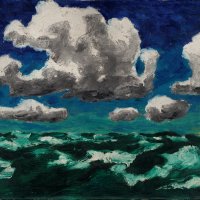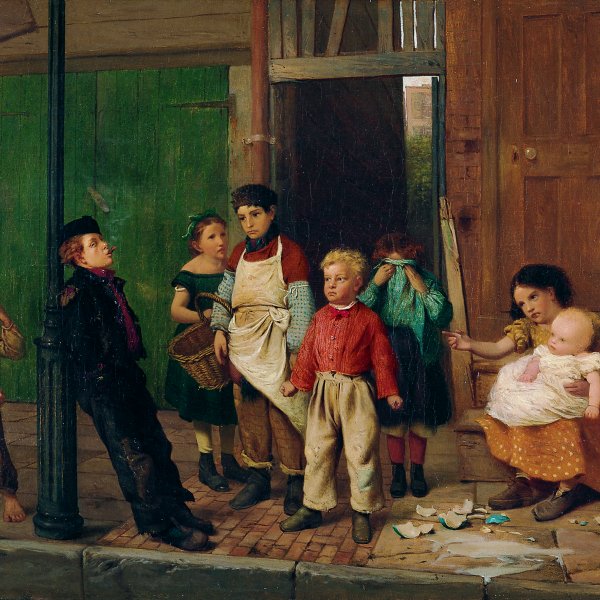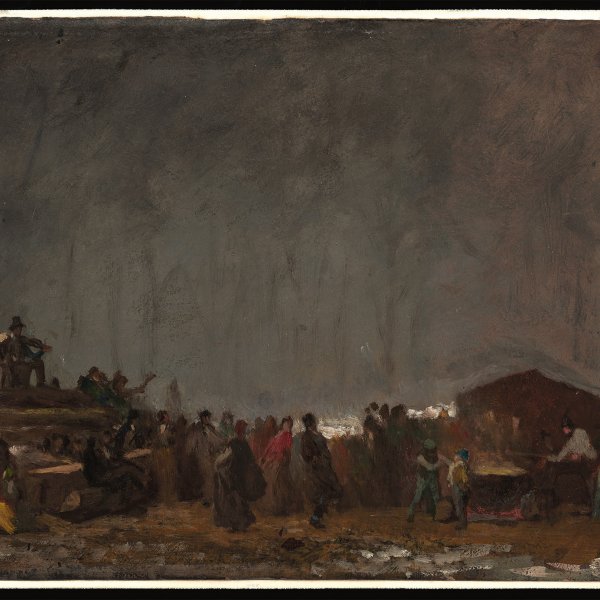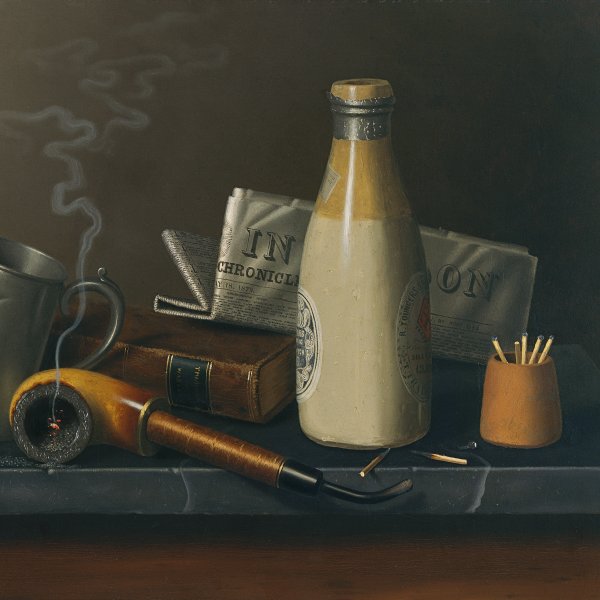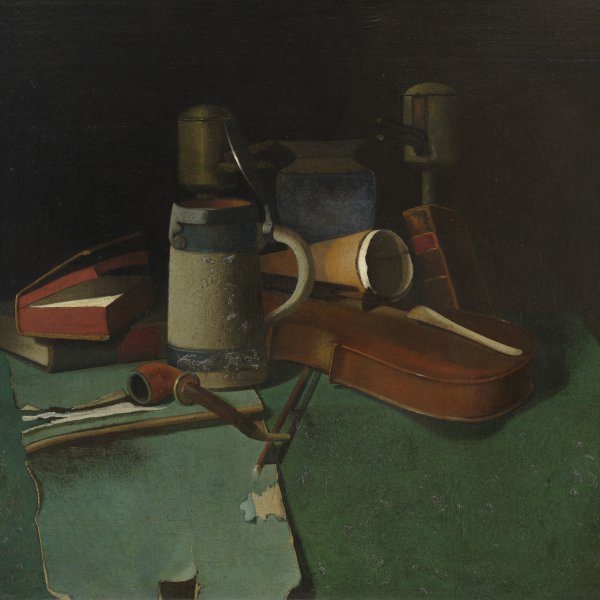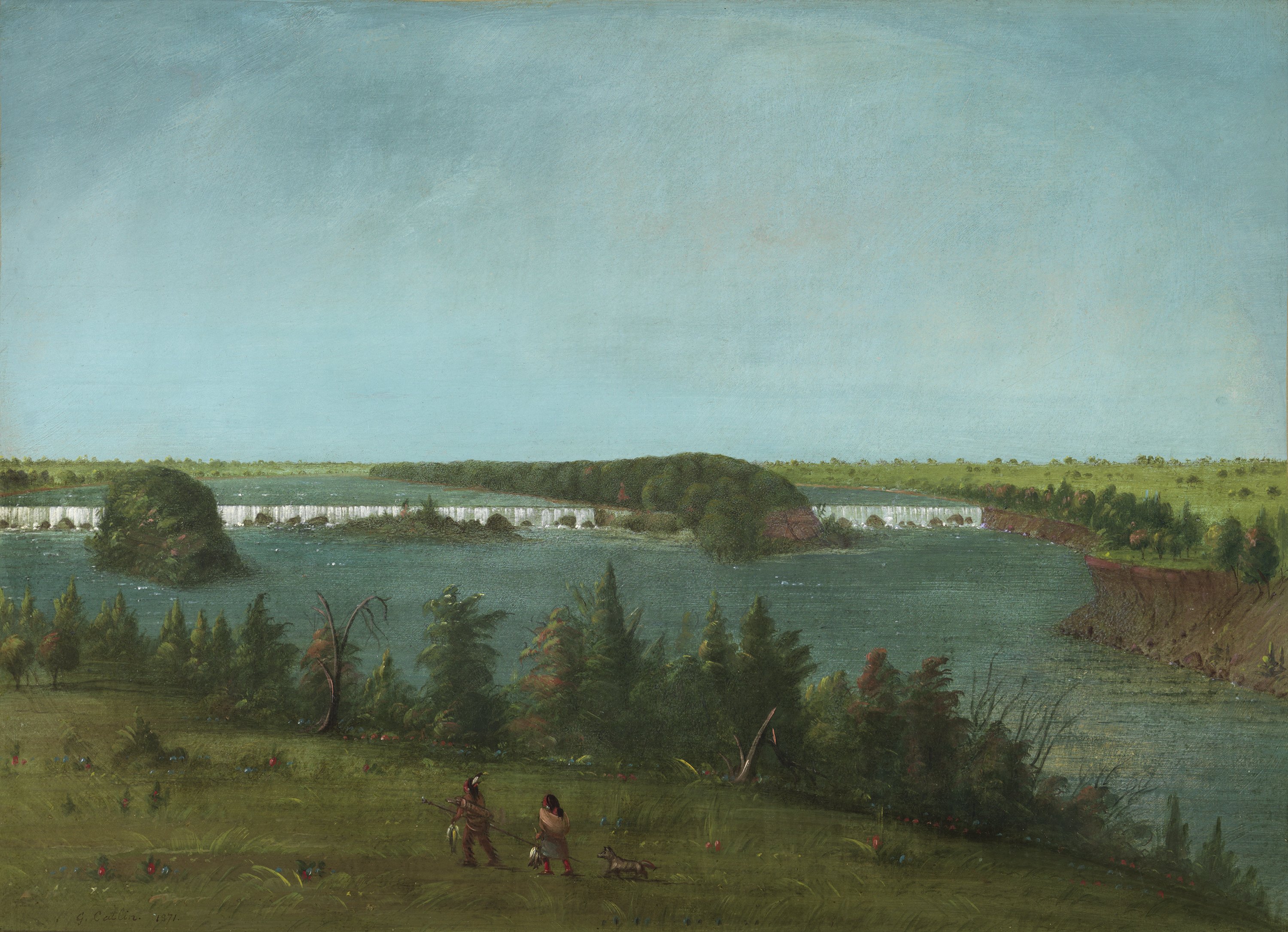The Falls of Saint Anthony
In the 19th century artists such as Carl Wimar, Albert Bierstadt, Henry Lewis and George Catlin developed a type of genre painting whose principal motifs were North American Indians and the landscape of the West, symbolising a territory yet uncontaminated by civilisation.
In the 1830s Catlin undertook numerous trips and expeditions, during which he made notes on the life, customs and appearance of the different tribes. Over time this material was published in the form of a book and a collection of around six hundred cartoons. Catlin’s desire to promote this great undertaking in America and Europe did not meet with the desired success and he was obliged to sell the entire group in order to pay his debts. Throughout the remainder of his life Catlin tried to reconstruct his magnum opus, and towards the end of his career he was commissioned to produce copies of some of his designs. The Falls of Saint Anthony is probably one of these commissions. It depicts two Indians returning from hunting and fishing, their clothing described in precise detail. The figures seem minute in comparison to the majestic landscape that opens out behind them.
CM
According to William H. Truettner, a scholar of his work, Catlin had made his first sketch of this spot during his stay at Fort Snelling in summer 1835, while crossing the Mississippi in a canoe, and would repeat this theme in at least four subsequent versions. The oldest work, which belongs to the Paul Mellon collection, depicts the falls without figures. In the Museo Thyssen-Bornemisza painting the artist adds an Indian and his wife carrying the fish they have just caught and in the later version he shows the expedition of Father Louis Hennepin, the first white man to set foot on these distant lands in 1680.
Catlin’s artistic style remained faithful to the anthropological realism of the first American portraitists of the late eighteenth and early nineteenth centuries, and his attitude to these impressive falls therefore differs substantially from that of Albert Bierstadt. Whereas the latter produces a dramatised, exaggerated and romantic view of the falls, Catlin views the scene with the objectivity of a reportage that is also consonant with the detailed tone of his writings: “Although a picturesque and spirited scene, ” noted the artist in 1841, it “is but a pigmy in size to Niagara, and other cataracts in our country — the actual perpendicular fall being but eighteen feet, though half a mile or so in extent, which is the width of the river; with brisk and leaping rapids above and below, giving life and spirit to the scene.” To emphasise this vastness, the painter uses a distant viewpoint that allows him to provide a more panoramic view of what he considered a genuine example of the charms of the West. The work’s first owner, Adele Gratiot (1826‒1887), from Galena, was the daughter of Catlin’s friend Henry Gratiot, a lead miner who became an agent of the Indian tribes of Winnebago. Her husband, the US congressman for Galena and advisor to Abraham Lincoln, Elihu B.Washburne, was an art collector.
Paloma Alarcó
Emotions through art
This artwork is part of a study we conducted to analyze people's emotional responses when observing 125 pieces from the museum.

